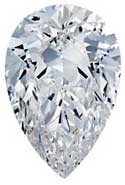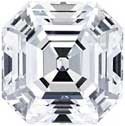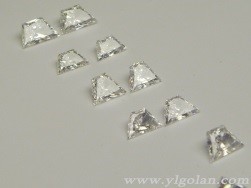Diamonds
 It may seem overwhelming to buy a diamond, but like anything else the key to making a good purchase is to be an informed consumer. At Louro and Sons Jewellers, we believe a knowledgeable client is the best kind of client. We are happy to offer a free consultation to guide a client through the process. Whether you are purchasing a diamond to create a fabulous piece of jewellery, or simply as an investment, we will take you through it step by step and make it an educational and pleasant experience.
It may seem overwhelming to buy a diamond, but like anything else the key to making a good purchase is to be an informed consumer. At Louro and Sons Jewellers, we believe a knowledgeable client is the best kind of client. We are happy to offer a free consultation to guide a client through the process. Whether you are purchasing a diamond to create a fabulous piece of jewellery, or simply as an investment, we will take you through it step by step and make it an educational and pleasant experience.
Buying Diamonds
Cut, Colour, Clarity and Carat Weight, known as the 4C’s, are the guides to buying diamonds.
At Louro and Sons Jewellers the 5th C is the Counsel of an expert and knowledgeable jeweller who is a key element in making an informed diamond acquisition.
Cut
 There are two meaning when discussing the cut of a diamond:
There are two meaning when discussing the cut of a diamond:
- The shape of a diamond. Example, round brilliant cut, emerald cut, oval cut, etc.
- Used to describe the reflective qualities. Are the angles good?
- Reflective quality will determine how well the diamond was cut.
- The reflective qualities get graded and scored on diamond certificates.
- In other words, Cut refers to the reflective quality of a diamond, not it’s shape.
Some say that cut is the most important of the 4C’s and a good cut gives a diamond its brilliance, which is the brightness that seems to come from the core of the stone. Angles and finish determine the diamond’s ability to handle and reflect light, leading to its brilliance.
General Grades

- Ideal
- Excellent/Premium
- Very Good
- Fair
- Poor
Clarity
This refers to the presence of characteristics or flaws on the surface of a diamond, called blemishes, and within the diamond, called inclusions.
The two types of flaws:
- Inclusions: internal flaws – air bubbles, cracks, non-diamond minerals in the stone, feathers, fissions, carbon.
- Blemishes: surface flaws – scratches, pits, chips (some blemishes occur during the cutting process).
For grading purposes all flaws, whether internal of external, are called inclusions.
Stones with no or few inclusions are more valuable because they are very rare.

Rough Diamond
Clarity Grades
F – Flawless
No Internal or external flaws. Extremely rare.
IF – Internally Flawless
No internal flaws, but some surface flaws. Very rare.
VVS1-VVS2 –Very Very Slightly Included
2 Grades – Minute inclusions very difficult to detect under 10x magnification by a trained gemologist.
VS1-VS2 –Very Slightly Included
2 Grades – Minute inclusions seen only with difficulty under 10x magnification.
SI1-SI2 –Slightly Included
2 Grades – Minute inclusions are visible under 10x magnification, may be visible to the untrained eye.
I1-I2-I3 – Included
3 Grades – Inclusions visible under 10x magnifications as well as the human eye.
Colour
It is the absence of colour in white diamonds that determines the “colour” of a diamond. The whiter the diamond, the greater its value as clear stones allow more light to go through than coloured diamonds. Colourless gems emit more sparkle and fire.

Grade
- A B C – Whiteness/Clarity/Colournessness
- D E F – Colourless
- G H I J – Near Colourless
- K L M – Faint Yellow
- N O P Q R – Very Light Yellow
- S T U V W X – Light Yellow
Carat Weight
- Carat is a unit of measure to weigh diamonds.
- 1 carat = 200 milligrams, 0.2 grams
- Carat is a word taken from carob seeds that were once used in ancient times to balance scale.
- Carob seeds were used due to their consistency in weight from seed to seed.
- Carat weight is NOT the same as karat, the method of determining the purity of gold.
- Deciding on a carat size is about striking a balance between size, quality and budget.
Diamond Shapes

Sparkling and fiery cut filled with drama.

Sparkling, not unlike the round brilliant, but shaped like an emerald cut.

Sparkling cut, like the round brilliant, but square.

A “stepped” cut, usually rectangular and originally developed for emeralds.
Elegant, but not as brilliant.

Also called a tear drop diamond.
Combination of the round brilliant cut and the marquise cut.

Brilliance and sparkle similar to a round brilliant.

Also called “navette”. Elongated with pointed ends.
Inspired by the smile of the Marquise de Pompadour and commissioned by the Sun King, Frances Louis XIV.

Considered by some to be the most romantic of all diamond cuts.
Brilliant.

Antique style cut.
Enjoying a small surge in popularity since 2007.

“Stepped” square cut developed in 1902 by the Asscher family.
Features a strong art deco influence.

Triangle shape.

“Stepped” or brilliant cut.
Can have a long lower and short upper base length.

Rectangular shape.
“Stepped” cut.
Straight or tapered this cut has “fire”, but no brilliance as it has no facets.
Became popular in the Art Nouveau period.

Half round or oval shape.
What to consider when shopping for a diamond:
What is the diamond for?
- Engagement ring
- Necklace/pendant
- Earrings
- Investment
What is your budget?
Inform yourself and find a jeweller you trust. As in buying a car, it’s good to shop around to find someone you believe in.
How to find a jeweller:
- A jeweller should consult with you free of charge.
- He/she should offer information and knowledge.
- He/she should consider your budget when offering choices.
- If you want a custom design, ensure the jeweller is a designer and has a repertoire of custom pieces.
- A jeweller should allow you time to think about our purchase, to “sleep on it”.
- He/she should only take a deposit when you are ready to start the process.
Every diamond is as individual as a finger print. The 4C’s should be examined together and all considerations should be discussed before a final decision is made. At Louro and Sons Jewellers we believe jewellery is an heirloom to be treasured and passed on from generation to generation. It can be an emotional purchase as well an investment, so take your time, get informed and consult a credible jeweller.
We would be pleased to speak with you to discuss any of this information or answer any questions you may have.